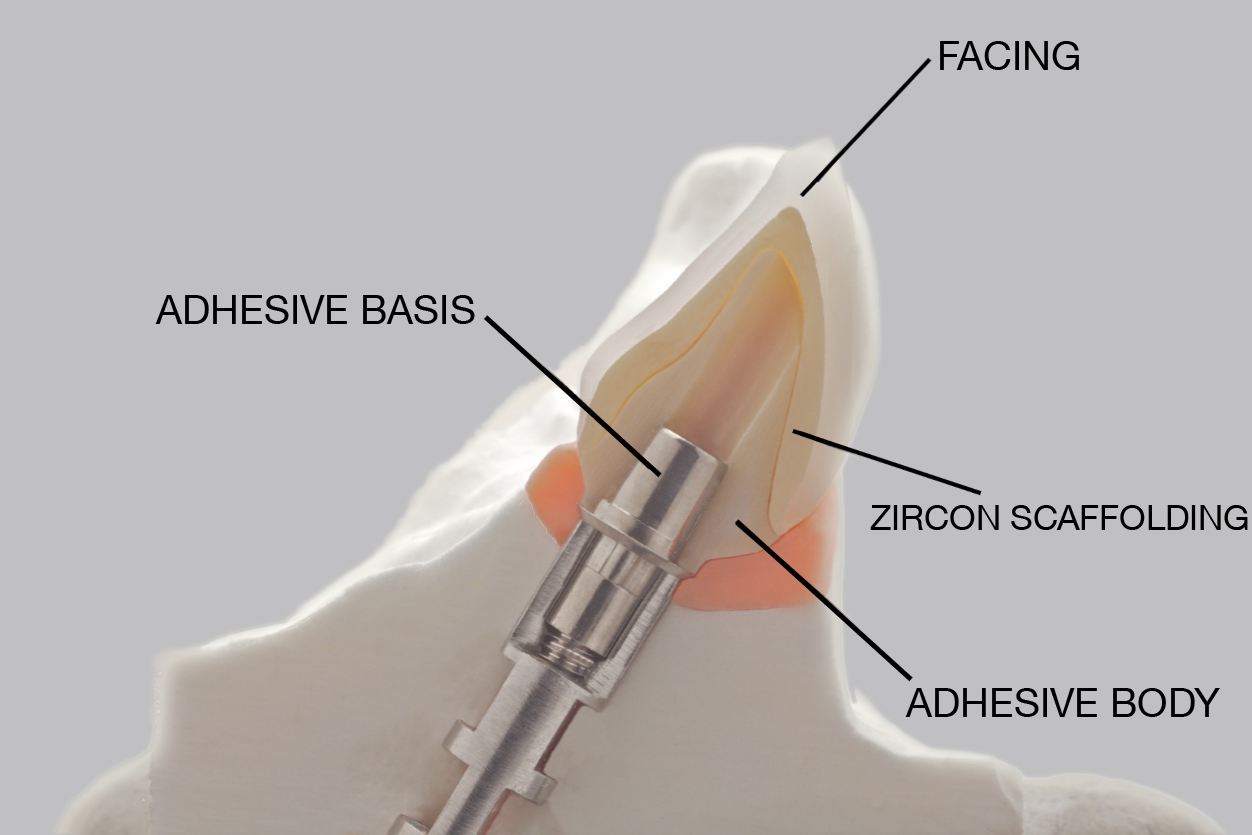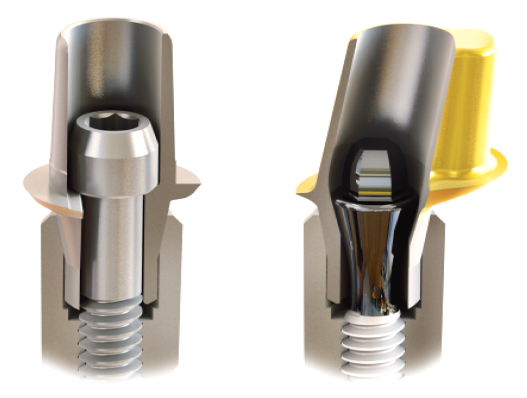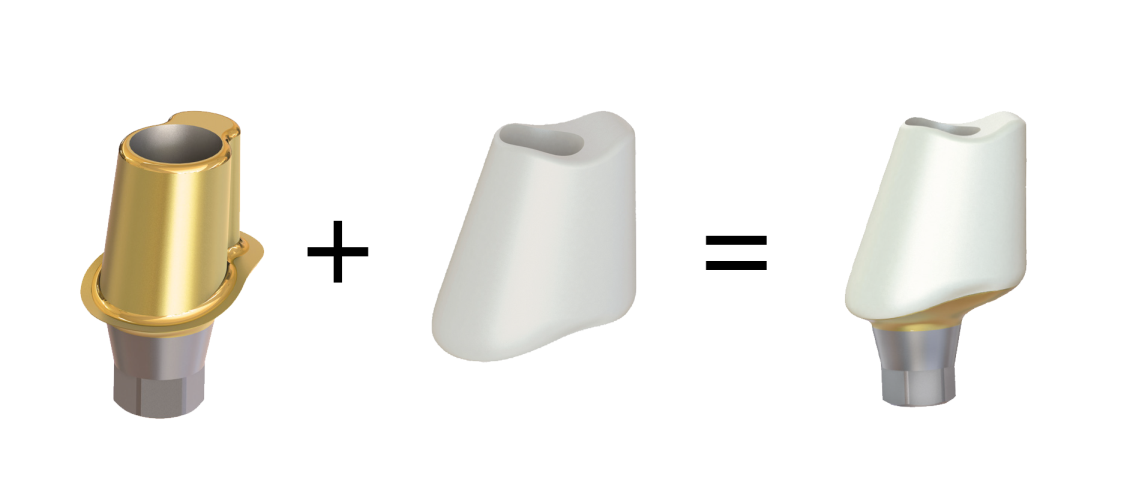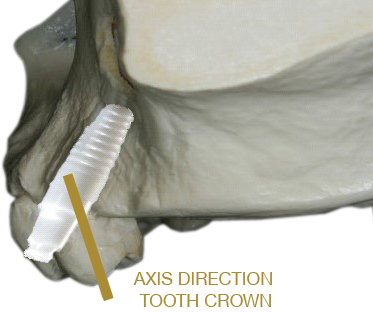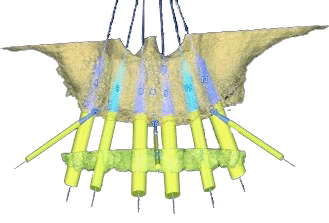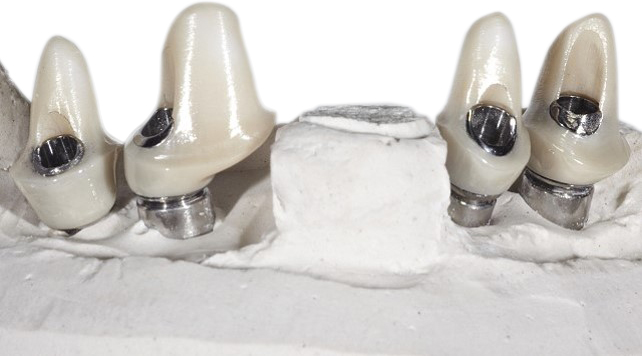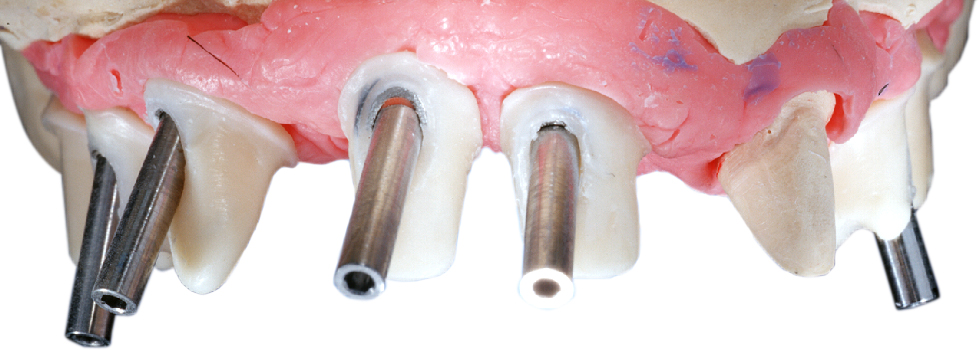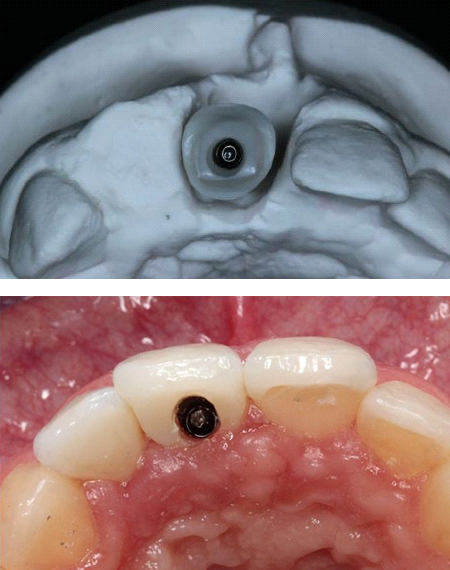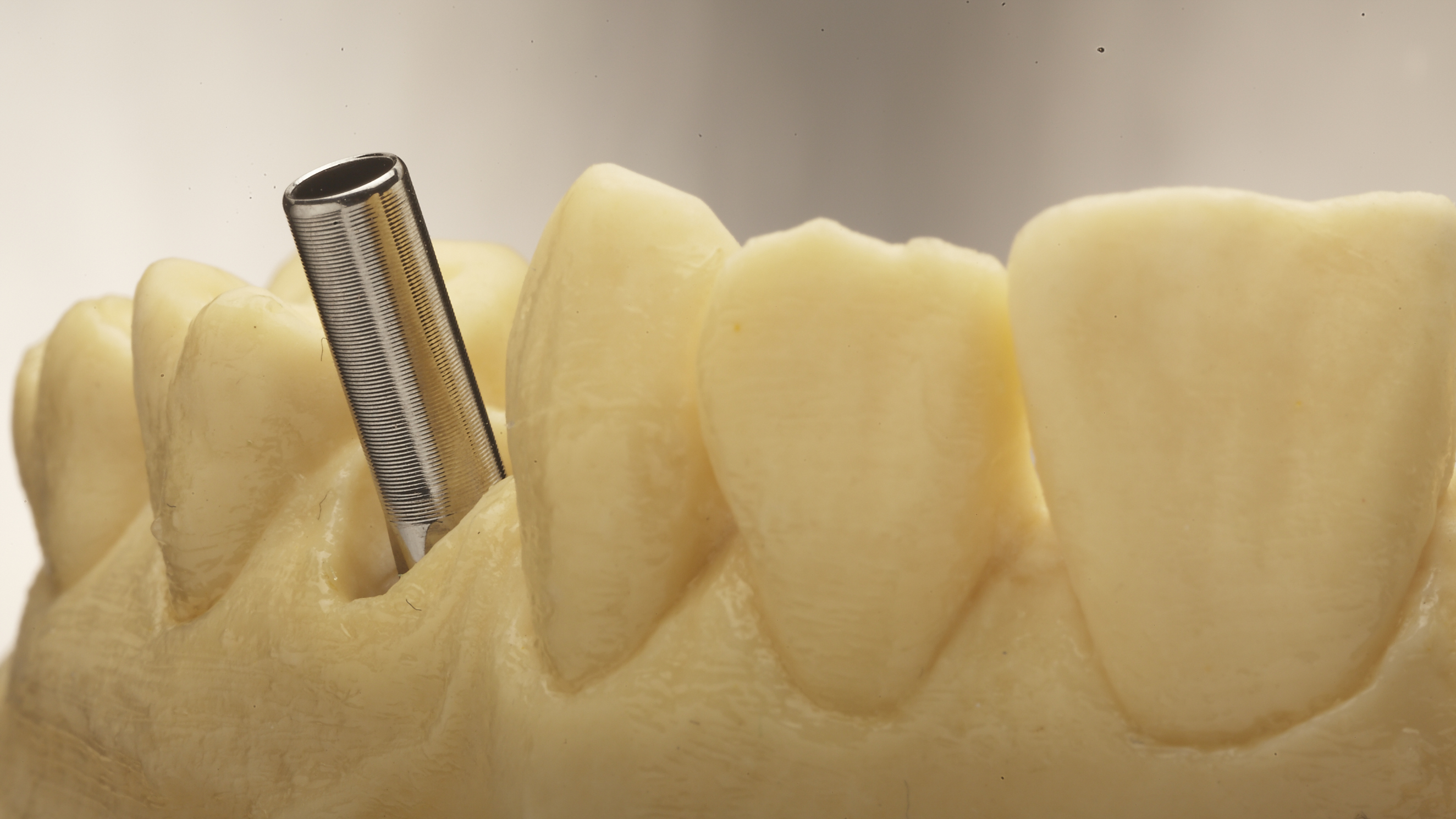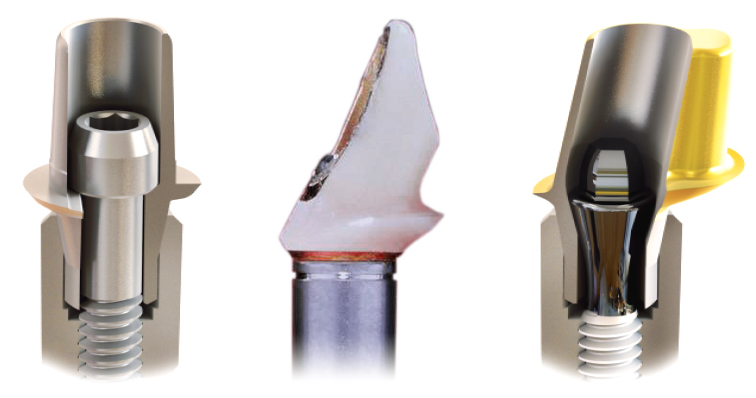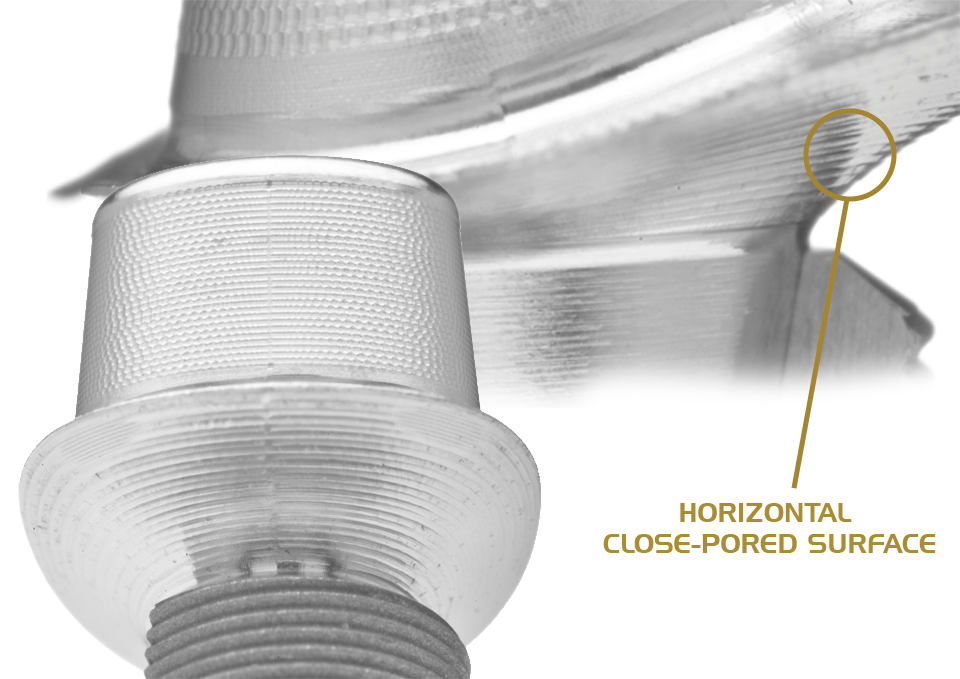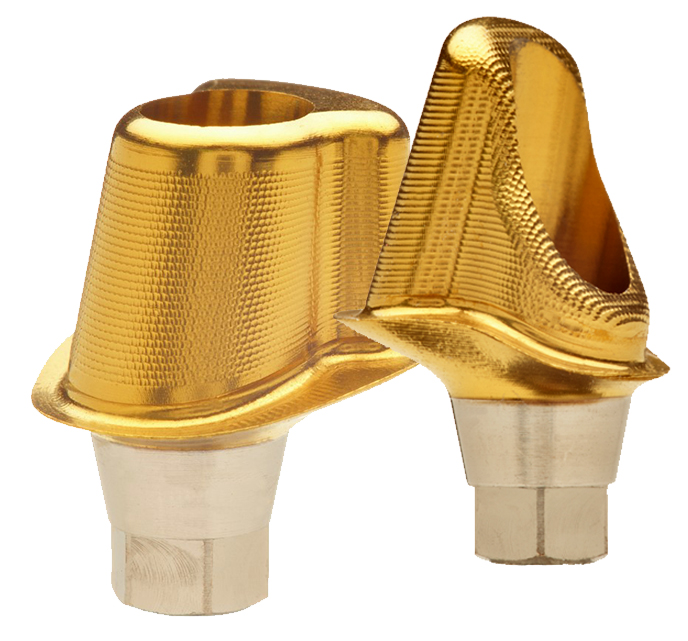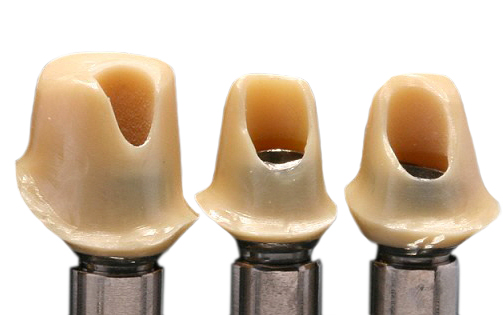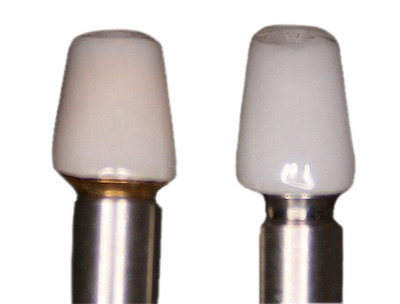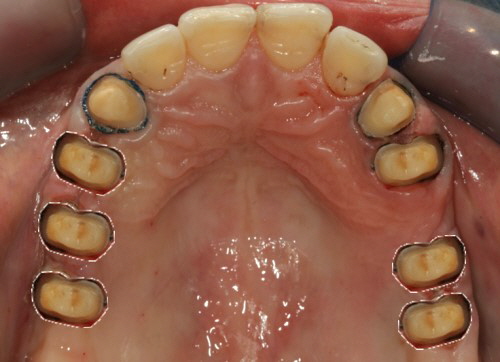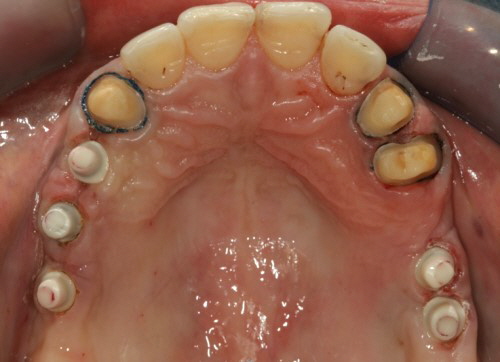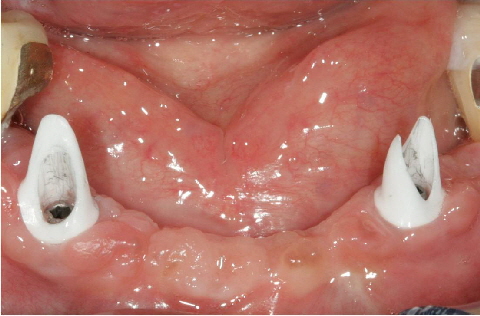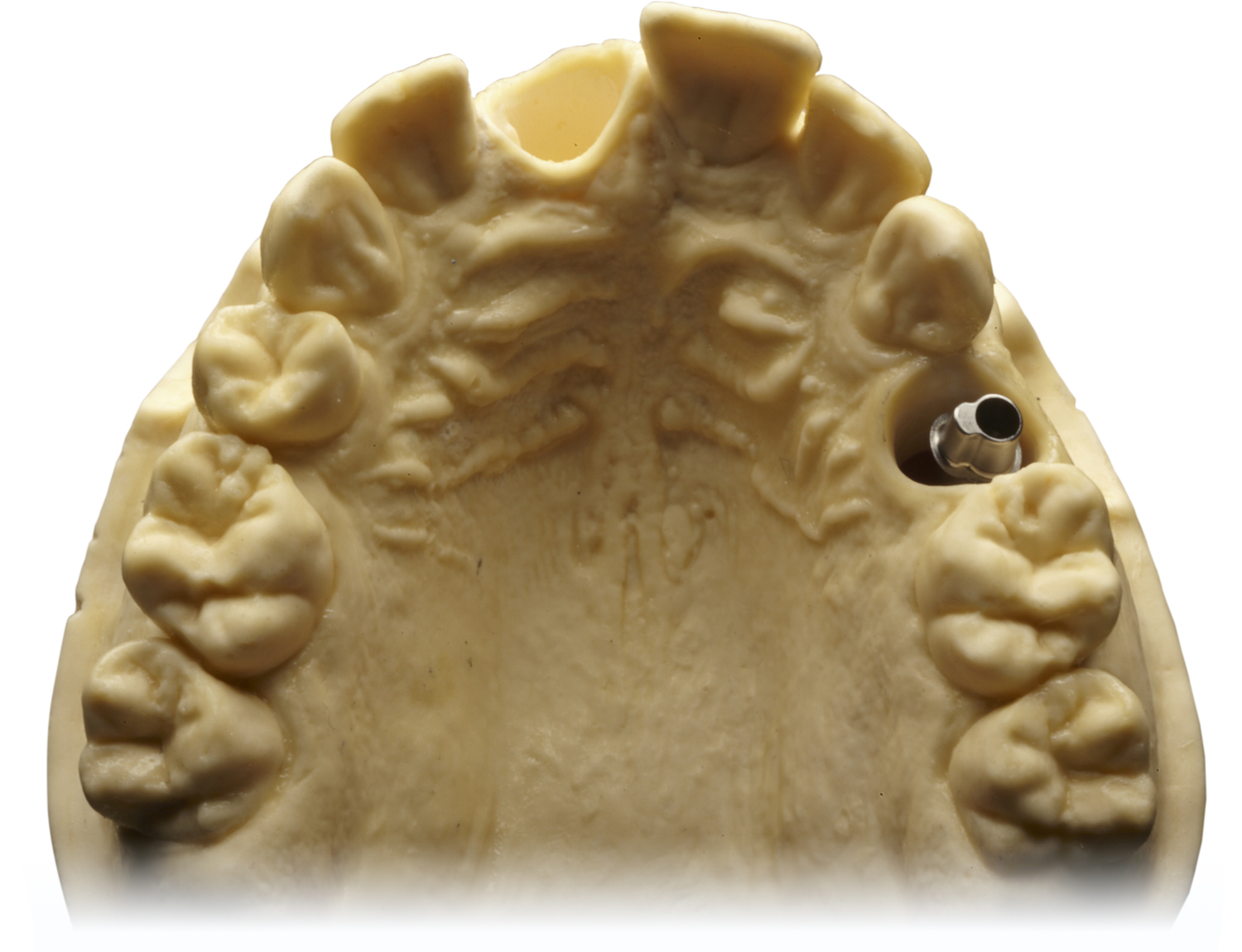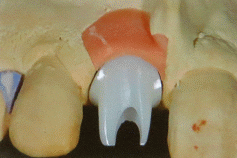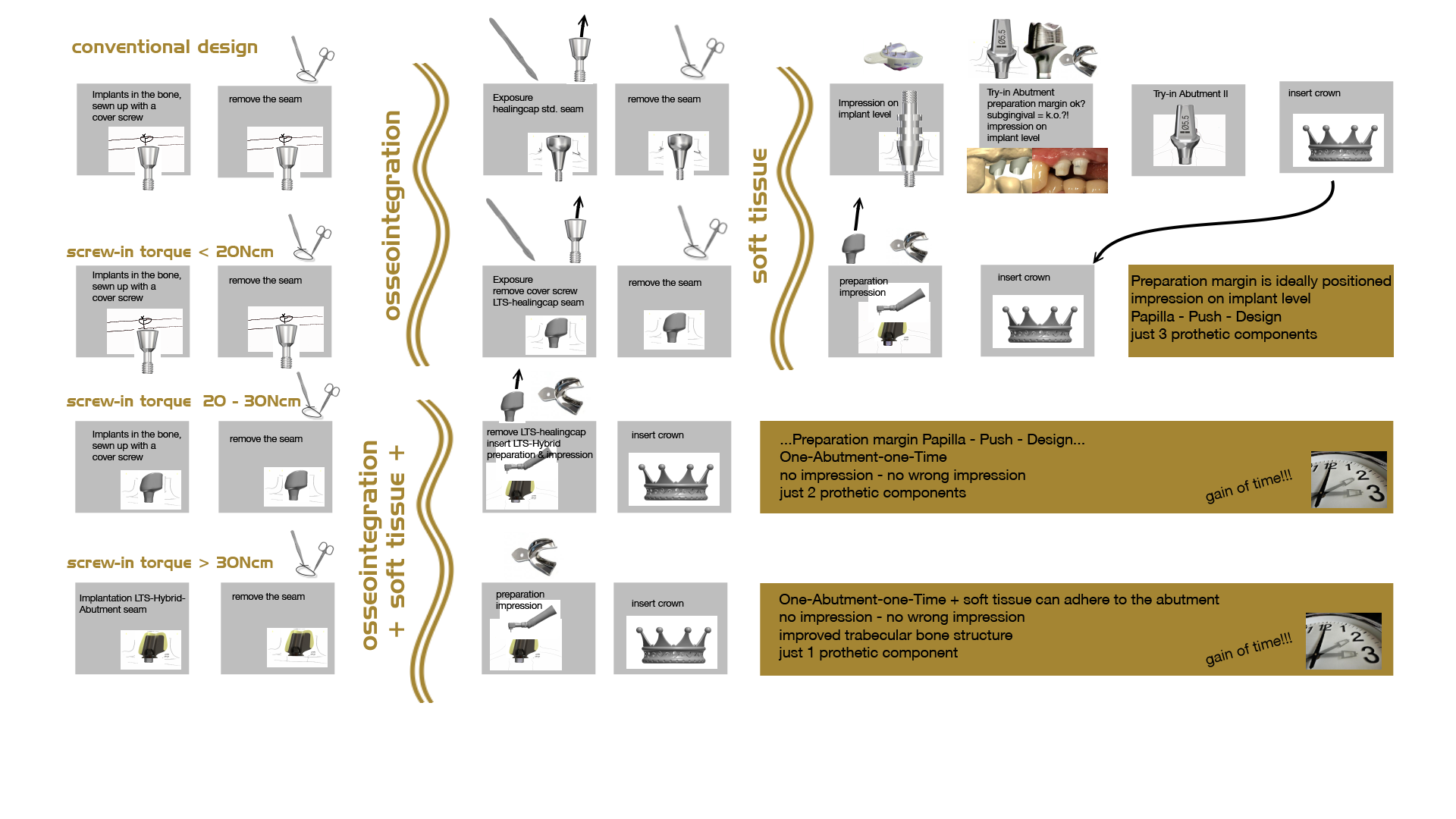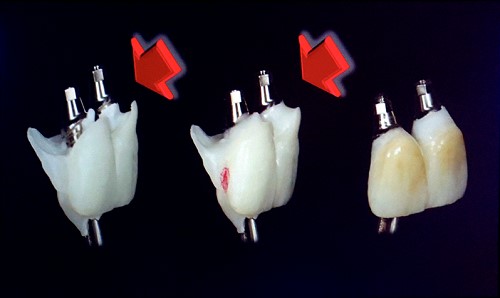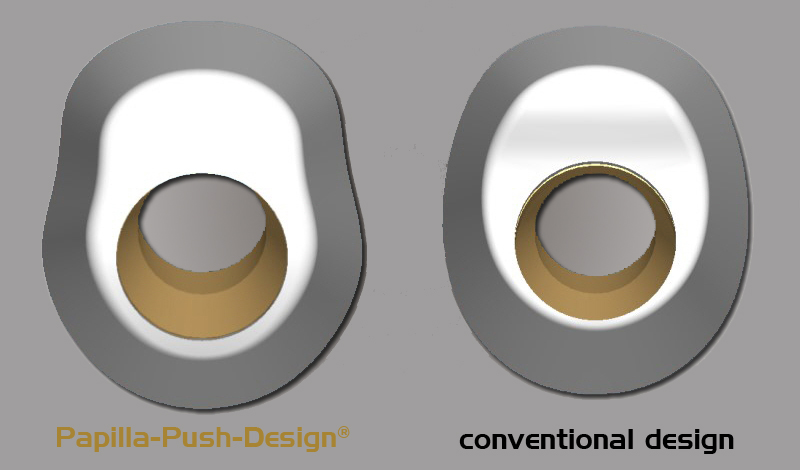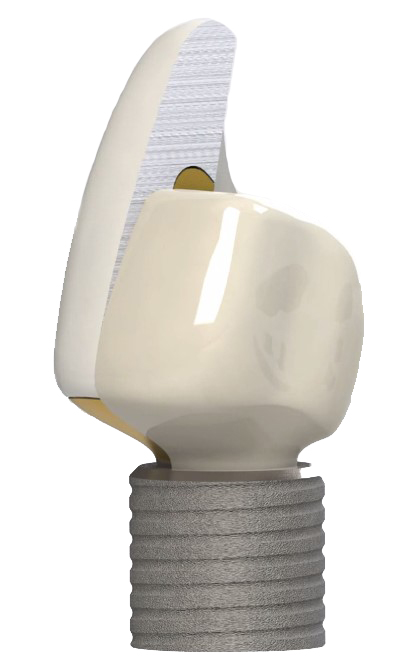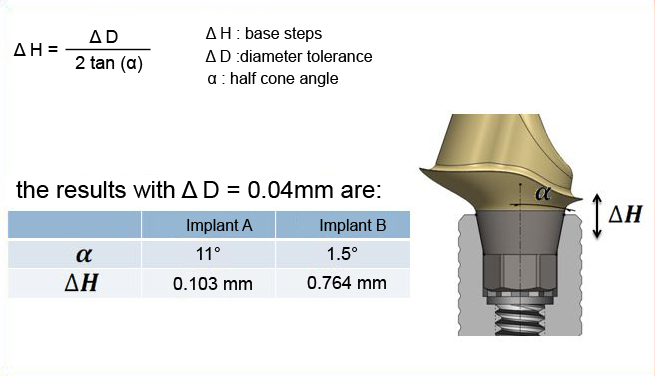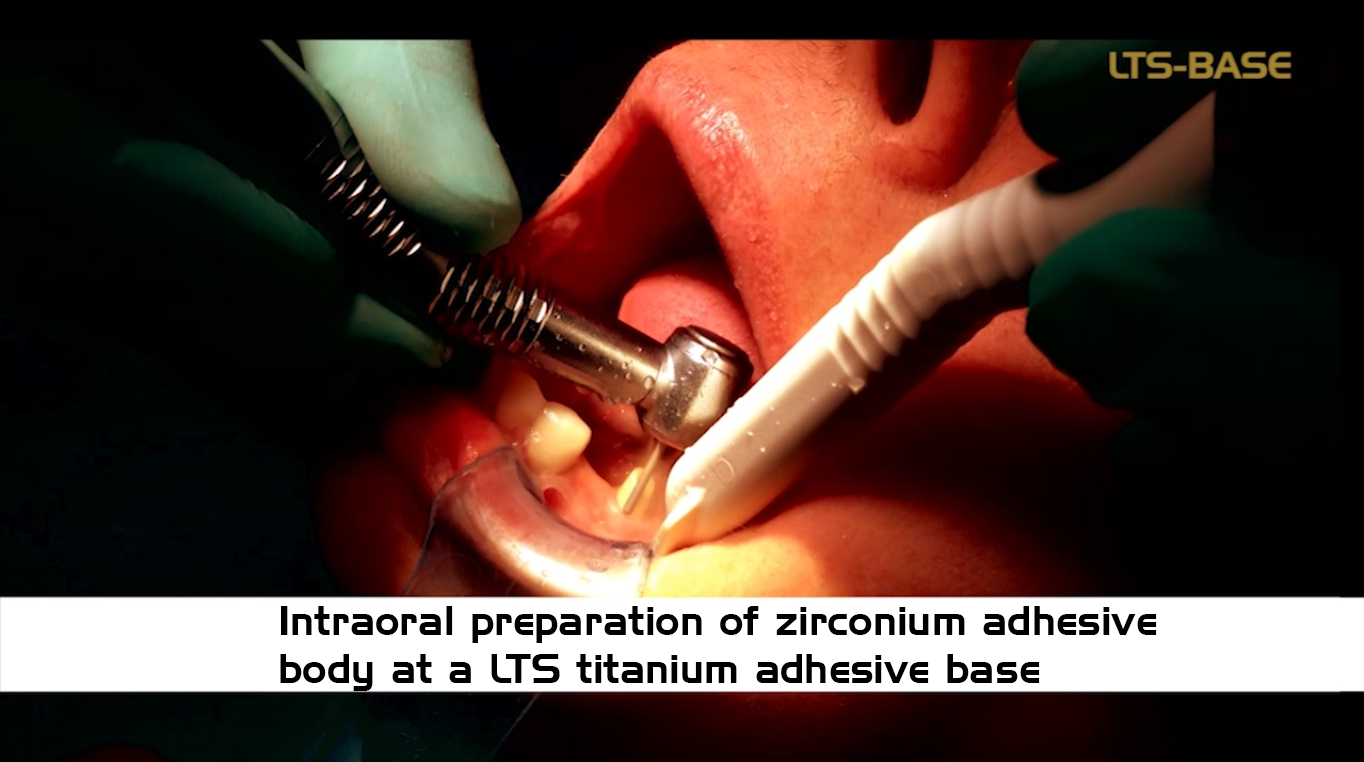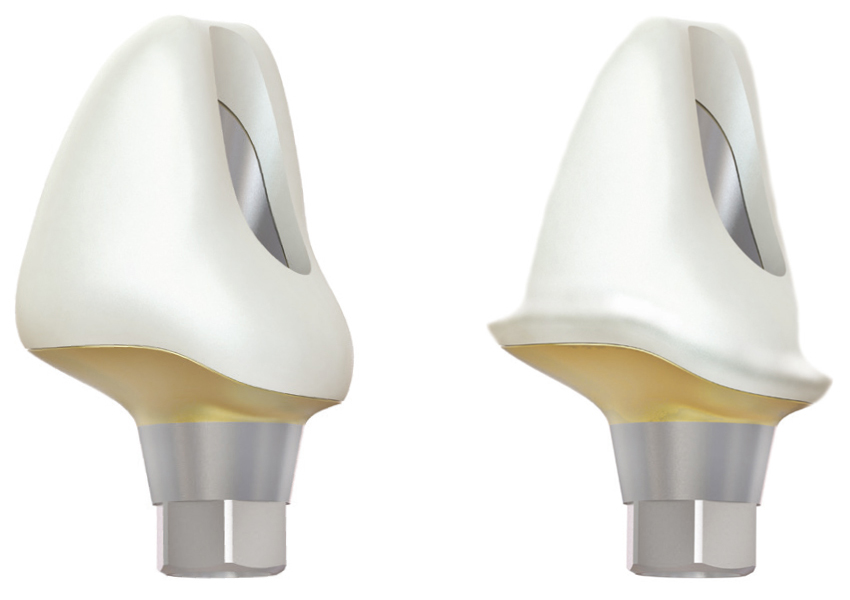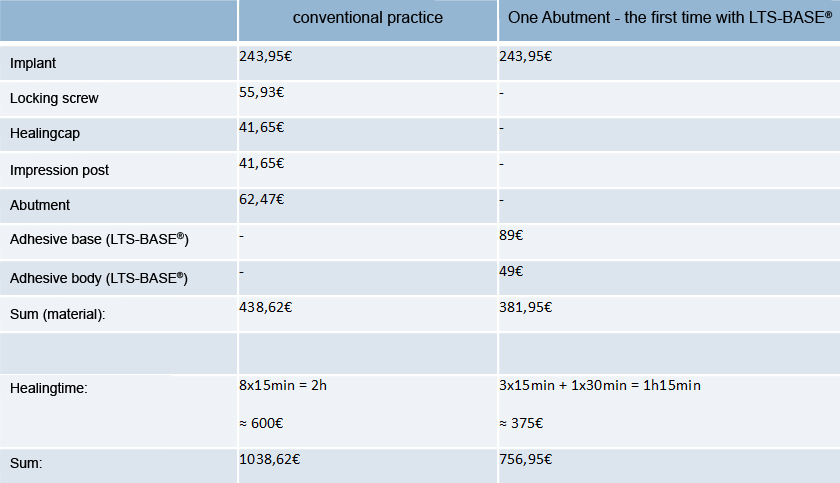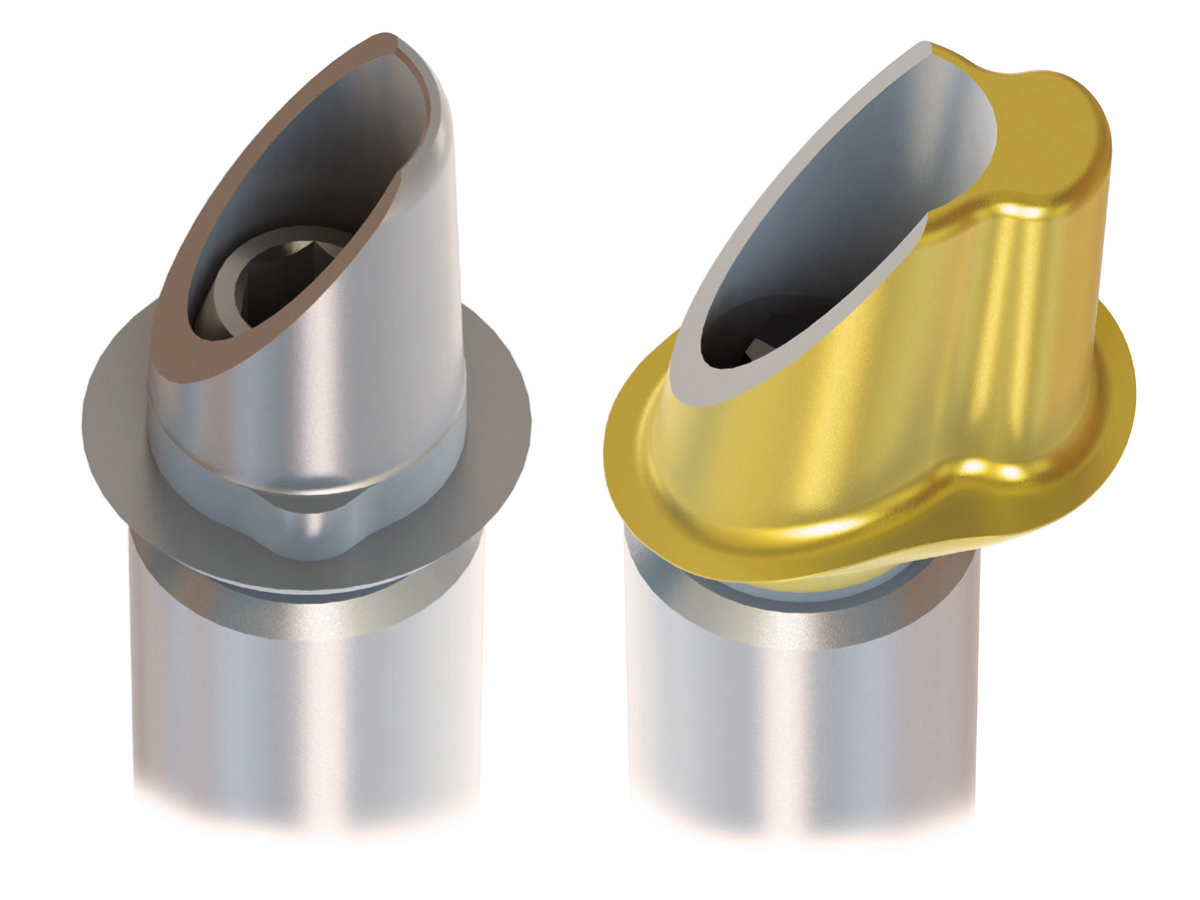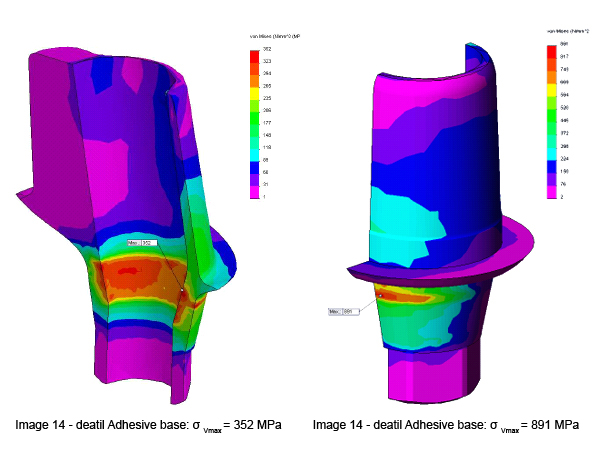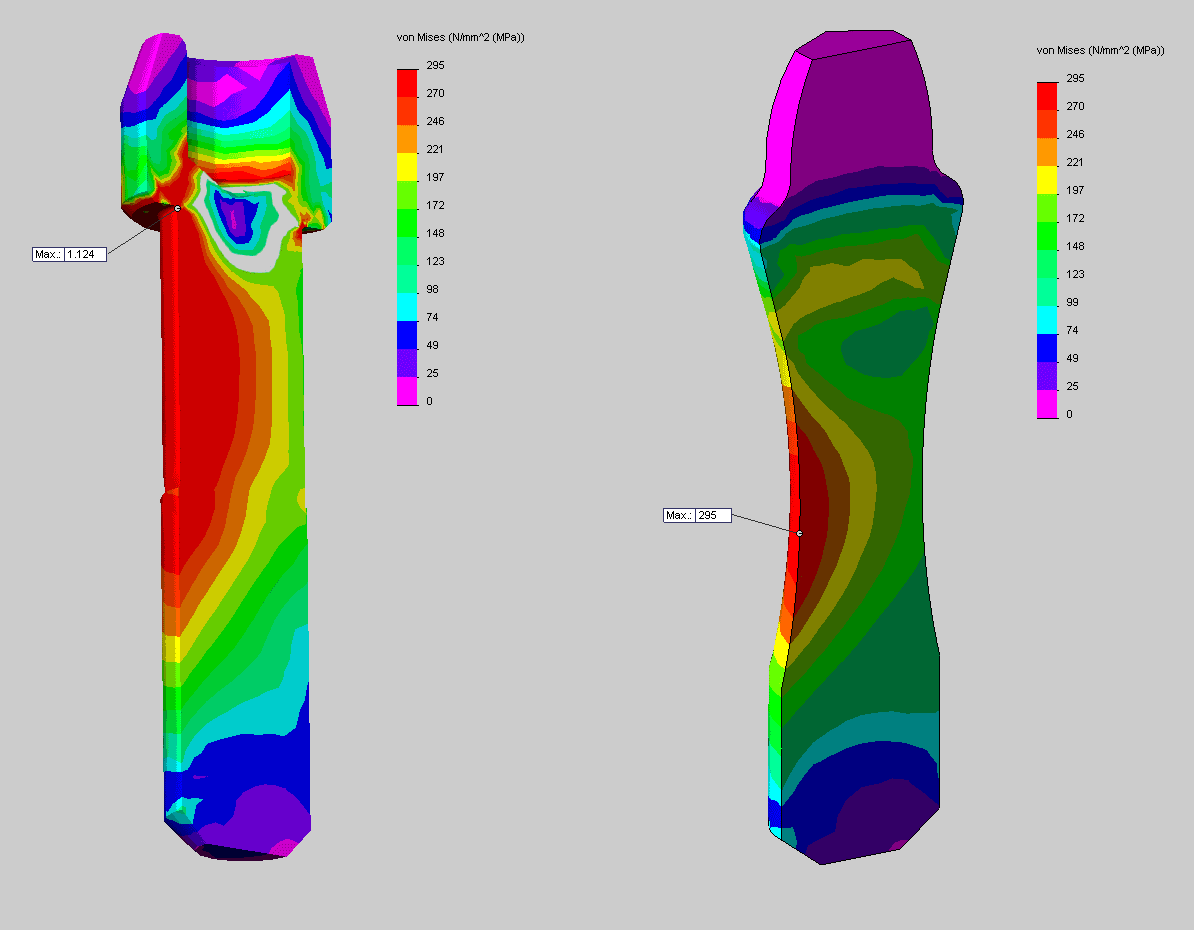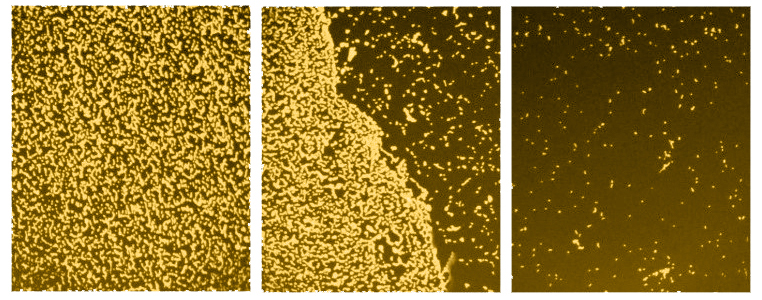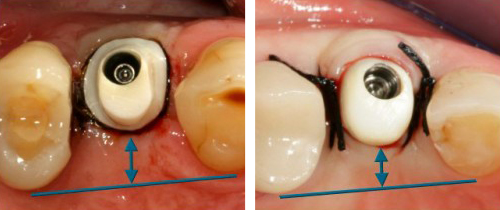Sviluppo degli abutment
Fino ad oggi, le basi al titanio per abutment ibridi erano dritte, vale a dire con il canale per la vite prolungato sull´ asse dell´impianto. Oggi, il nuovo LTS-BASE® rende disponibile una base aderente per abutments ibridi, con asse d´impianto angolata.
Abutment Angolati
L’anatomia dell´osso suggerisce all´implantologo la direzione dell´asse per l´impianto. La testa della vite limita l´angolazione massima possibile.
Le posizioni di tipo sagittale e trasversale possono sfavorire il posizionamento dell´impianto.
CAD vs. clinica
A) ) Il contorno della preparazione viene applicato sotto la gengiva con un’ampiezza non possibile in passato. In questo caso vi è il rischio che dopo la cementificazione rimangano residui di cemento.
B) Il contorno della preparazione mal posizionato dovrà essere nuovamente modellato al fine di adattare l`abutment in laboratorio. Questo procedimento comporta costi maggiori e un maggior dispendio di tempo. Gli abutment al titanio non possono essere levigati in via intraorale per il rischio che rimangano tatuaggi sulla gengiva.
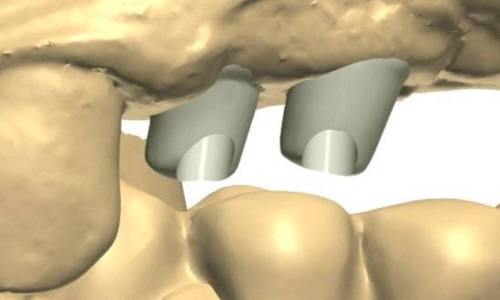
|
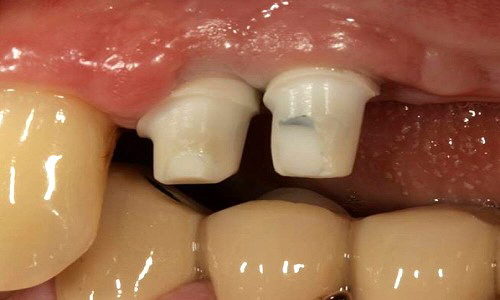
|
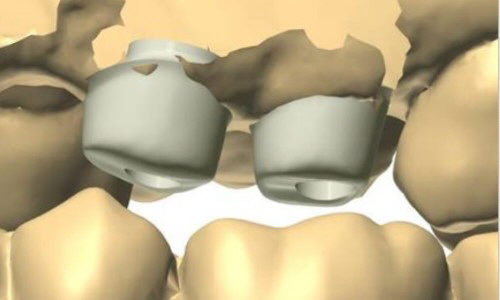
|
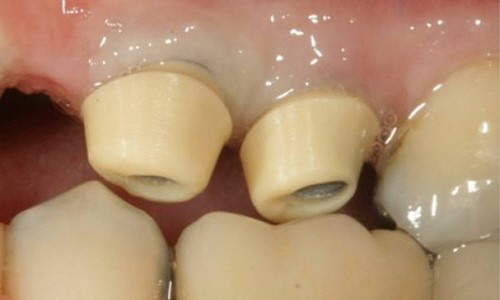
|
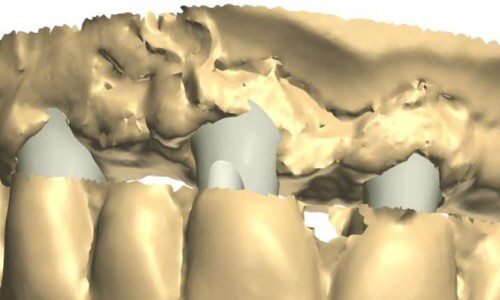
|
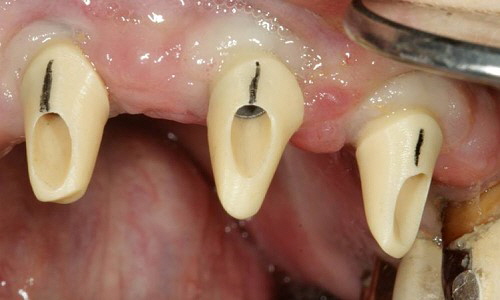
|
Being screwed vs. being cemented
If an angulation of the crown will be necessary, clinical situations may receive a prosthetic restoration when using the angulated screw access channel of the LTS-BASE®. According to clinical studies, this holds true in more than 80 per cent of the cases in the aesthetic visual range.
Thus the screw access whole would be directly at the incisal edge. Applying the angulated screw channel of the LTS-BASE® it may be shifted to oral.
The LTS-BASE® enables screwed solutions in positions where so far no screwing had been possible.
Il Backpacker
Il Backpacker in forma omega offre superfici aderenti maggiori e stabilita.
Nel caso la base aderente al titanio venga accorciata (Cut off), al corpo adesivo rimane poca superficie adesiva che impedisce una frattura orale. Il gancio binario scanalatura-spalla del Backpaper impedisce la rottura orale.
basal smooth vs. rough
Rough is better than smooth!
Contrary to popular opinion, that the basal surface of the abutment has to be highly polished, several studies show that a rough surface with a microstructure is less risky for a peri-implantitis.
Abutments4life offers test specimen in different sizes, so grunding the ceramic body is not longer required. Because of the structured glue surface, sandblasting is also not longer required.
Literature
How to establish a suitable surface for zirkonia implant abutments under laboratory conditions. Happe A, Röling N, Beuer F, Schäfer A, Nickenig H-J, Rothamel D: Clinical Oral implants Research Vol 23 Suppl.7Oct 2012:44-45
More literature
- Smooth surfaces favour apical migration of junctional epithelium and do not favour cell adhesion.
Lindhe 1982, Brunette 1992, Guy 1993, Hormina & Könönen 1994, Cochran 1994, Meyle 1991 - Length of junct. epithel. was higher on smooth surfaces (2.9mm) than for rough surfaces (1.4-1.6mm), with an inverse relationship for the length oft he connective tissue in humans.
Glauser et al. 2005 - Clinically ultrapolished zirconia-abutments showed a slightly higher increase in probing depth and more bleeding on probing compared to machined titanium in humans.
Bollen 1996 - Smoothening of an intra-oral surface under a certain Ra-value (threshold Ra) of around 0.2 µm causes no further reduction of supra- and subgingival load of plaque.
Quirynen 1993, 1995, Bollen 1996
Superficie adesiva strutturata
La superficie adesiva strutturata (ritentiva) rende superflua la sabbiatura.
Le basi adesive convenzionali devono essere sabbiate prima dell’incollaggio. Questo passo di lavoro è dispendioso, sia in termini di tempo che economici. Le basi adesive LTS-BASE® presentano una superficie adesiva adattata alla granulometria dell’adesivo per abutment. Ciò consente di eliminare il processo di sabbiatura.
Estetica
Appoggio occlusale
Compatibility to all common implant systems
Compatibility to all common implant systems
Abutments 4 Life offer numerous LTS-BASE® Abutment lines being compatible to all common implant systems.

